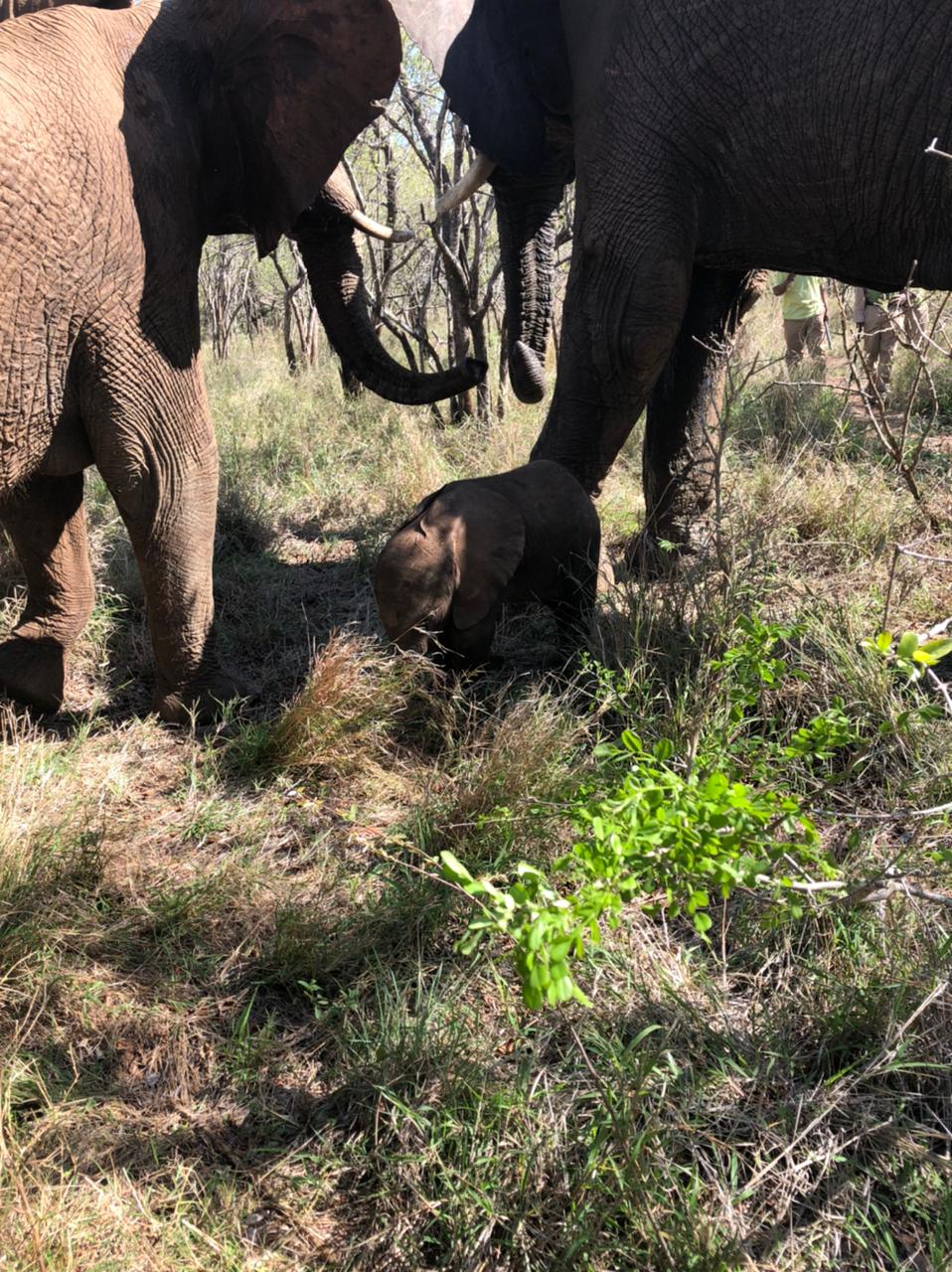The Reintegration of the Jabulani Herd
Our long-term goal in stepping in to help rescue and provide a safe and protected wilderness home to a herd that was in need has always been full reintegration into the wild.
When HERD Founder, Adine’s mother Lente rescued and accepted the responsibility of keeping the original Jabulani herd alive, sustained and supported, we always knew the time would come to plan for their ultimate release, but it required very essential parts to the greater puzzle that is the rewilding of animals who have been semi-habituated to humans. With Adine now leading and overseeing the future of the herd, we wanted to let you know more about our plan for the elephants.
The herd we rescued from Zimbabwe in 2002 were threatened with being killed during the violent land reforms in the country at the time. The farm they were on was at risk of being seized and the elephants’ lives ended. The herd was made up of elephant orphans from different backgrounds and as a result were already the blend of cows and bulls they are today. To rescue the elephants, they were loaded onto trucks at night and secretly and safely removed from the farm to be transported across the border to South Africa.
Their carers travelled with them, to start new lives in South Africa, at Jabulani, in the Kapama Private Game Reserve in the Limpopo Province. They left behind their families in many cases, partly because they needed employment to be able to support their families and jobs were and continue to be short in Zimbabwe, with poverty and unemployment rates being sky high. They also left with the herd because they had come to be guardians to the elephants. They were their protectors and translators, in a way. They knew how to care for the elephants, what they needed, what their individual personalities required. They would be essential in helping the elephants travel to Jabulani and to settle into their new home.
Since elephants are sensitive and complex beings, their needs are more intricate and ensuring their emotional wellbeing is as vital as caring for their physical health. The elephant carers arrived at the reserve in Hoedspruit, together with the herd, where they would be ensured a second chance at life.
The herd arrived as individuals – although some had bonded, they did not yet have a herd structure among themselves.
During the turmoil in Zimbabwe, Tokwe and Lundi became quite close and once the herd settled into their new home, the two cows helped to keep the herd calm, as the female leaders. Many of the elephants have had pasts we don’t know much about, but we can see in their behaviour over the years that some were more sensitive than others. It is believed that Bubi witnessed her mother being poached and is as a result a much more untrusting elephant. Similarly, Setombe has a nervous disposition, and we believe it might be from a similar past experience.
In our reserve, we had a special homestead stable built for the herd, for them to settle into life in the wilderness. Most of the elephants had never seen wildlife before. Now, they were surrounded by zebra, lions, buffalo, wildebeest, and other wild elephant herds. We undertook many slow months of getting the herd used to their wilderness and new wild neighbours, while introducing them to walks in the reserve during the day, and housing them in the protective barrier of the homestead overnight.
As a herd who were used to humans, not all necessarily fond of humans, but certainly familiar with them, we had to prevent any risk of human-elephant conflict in the reserve, with the elephants potentially straying and coming into contact with the lodges in the reserve, game vehicles, land management teams, and our own teams at Jabulani. Their carers accompanied them daily and have ever since, on walks in the wild, to keep the herd together, safe and not roaming into any danger that could result in them becoming problem elephants.
Perceptions of elephants differ across the continent of Africa, never mind the world.
Some view elephants as pests and indeed when elephants do enter human settlements they can cause immense trouble, whether on purpose or not. They can raid farms, knocking over fences, bashing through houses, and running down people who may get in their way, out of protection for themselves. Elephants have different personalities and an elephant who is more aggressive, especially a bull in musth, or one that has seen the brutal effects of poaching, may be very dangerous around humans.
We have therefore endeavored to keep our rescued herd safe from this fate, giving them what we believe to be the best life we can. They have been able to roam freely through the wild, foraging, swimming, bonding, playing, mud bathing and the likes from sunrise to set, while staying in their homestead and gardens overnight, together, with the elephants that have become their family. But we also want more for the herd.
Often what we want differs greatly from what is possible and practical in life, and this is especially the case in wildlife conservation in a country like South Africa where land is fenced and scarce. Unlike in Kenya, where vast tracts of land for wildlife still exists, without fencing to stop the movements of free roaming animals, South Africa has land shortages, overpopulation, and fences that restrict movements and reduce the scale of land for elephants to move. Elephants need hundreds of hectares, ideally, to roam and live in harmony with their land and environment. South Africa might not be the only option, as countries around us have more open spaces available, but ensuring that the risk of poaching is low, and that protection against poaching is secure is vital when considering the location.
Finding land big enough, with no tourism presence, no human settlements, no threat of land claims, is difficult and incredibly expensive to purchase. We were lucky enough to be able to provide the rescued herd and the new elephant orphans they have accepted into their family with the wilderness they needed, the land that could sustain their needs.
We have been working with a few partners who specialise in elephant behaviour and rewilding for many years as we plan the next steps for our journey with the herd and will rely on them to assist with procuring land and finding the safe haven the herd needs.
But the reintegration won’t be simple, nor will it be fast.
We are busy researching the behaviours of the herd, watching their dynamics on the ground, with our Carers who spend all day with them, reporting on which elephants spend the most time with whom, where the bonds lie, what factors affect their bonds and dynamics in the bush, and what the individual elephants’ needs are. We are also monitoring the herd using a drone donated to us by the Izindlovu Fund in Belgium. This allows us to see better in the thick bush and over vast spaces, to track the herd’s movements while in foraging areas, where they move about freely. We are reporting which elephants tend to wander off and enjoy being alone, versus which elephants choose to be around others more.
This information is vital in determining which elephants in the herd will be able to be reintegrated, and in what stages and order we can start rewilding them. For instance, we cannot separate certain elephants who have tight bonds as it can cause great damage in the process to the herd. Fishan will not be able to be rewilded entirely due to his leg injury, so we will be responsible for him for his lifetime, and will need to ensure he isn’t affected negatively by losing the herdmates he is closest to.
We are taking note of the bulls who in the wild choose naturally to separate from the female-led herds as they grow older, and choose to wander alone or to join a bachelor bull herd. We don’t have all the answers yet and will continue compiling all the facts we need to make the best decisions for the herd.
In Khanyisa’s case, we couldn’t separate her from the mothers and allomothers who have helped to raise her, especially as females and orphan calves rely on their social structures. Khanyisa is still milk-dependent and will be until at least the age of around five years.
Since we established the HERD elephant orphanage to provide a place of rehabilitation and reintegration for calves in South Africa, and are currently the only one of its kind in the country, certain elephant mothers and nurturers will need to be in the reserve and homestead to help raise and accept the orphans to create that potential for rescue and giving orphans displaced or orphaned due to human-elephant conflict a second chance at life with a herd.
Over the next two to five years, this process of investigation and land procurement will take place, with the hope of releasing two or three elephants from the Jabulani herd into their new wilderness first. The process will be hugely monitored and led by experts in the field of reintegration.Our focus is on rehabilitation and integration of calves into a herd, but the rewilding of orphans into the wild will be facilitated by those who have specialised in this very complex process.
We look forward to sharing more as the project develops and will be sure to keep you updated whenever we know more. The elephants’ wellbeing and future as a wild species remains the most important focus and everything we would do would be for their own benefit, ensuring their safety in a new wilderness, so that our long journey with the herd remains a success for these elephants who deserve what nature intended.




 Comment
Comment






Wow! This takes complexity to a whole different level! Decisions will be made and questioned and changed with the continually changing dynamics. Bless you all, every single one of you, for all and everything you do; we will continue to help where we can.
I am so impressed with your knowledge and love for your beautiful herd. I know will miss those who move on to love on their own, but as a wildlife career in the States I know how important it is.
Blessing❤️